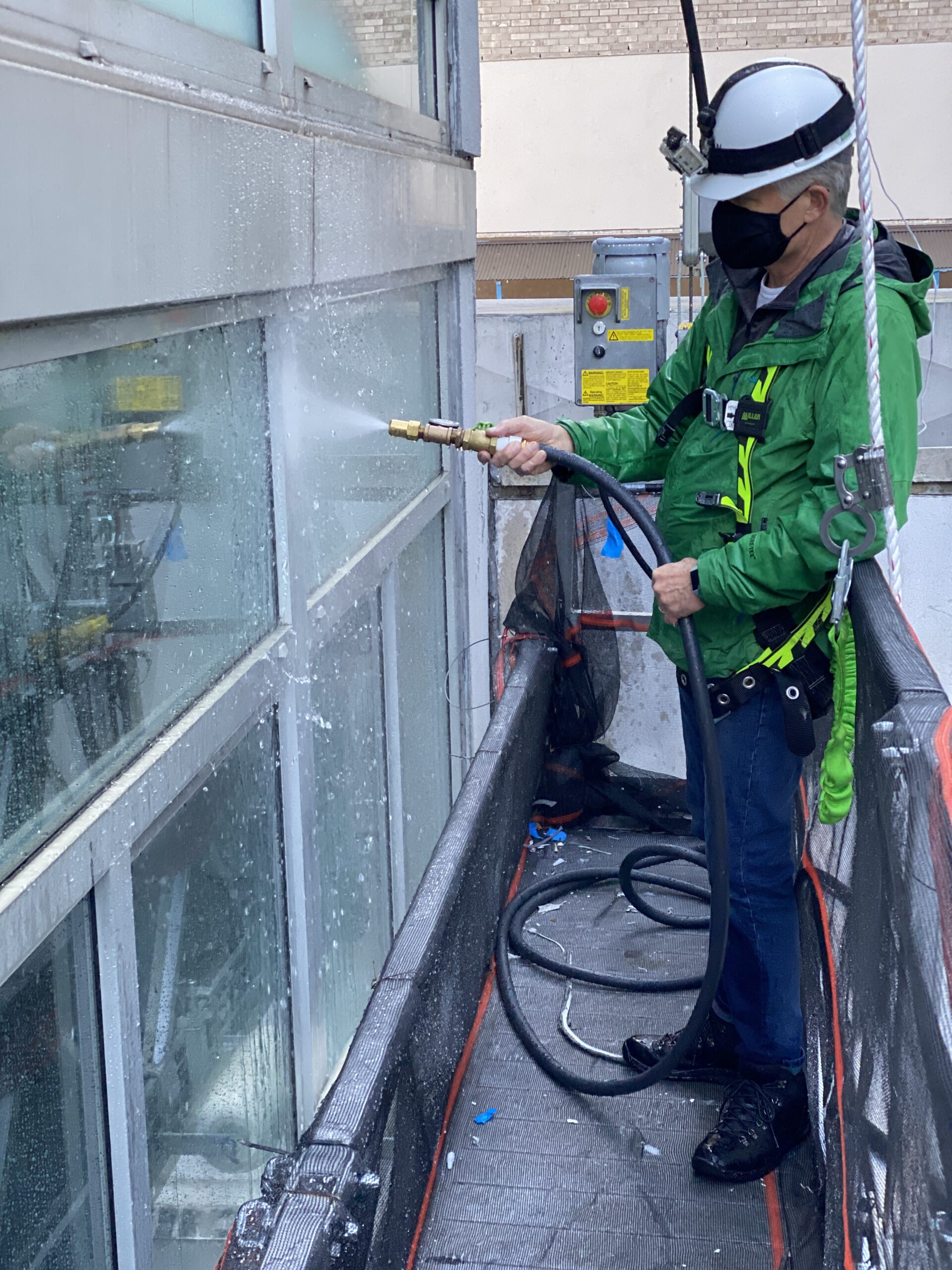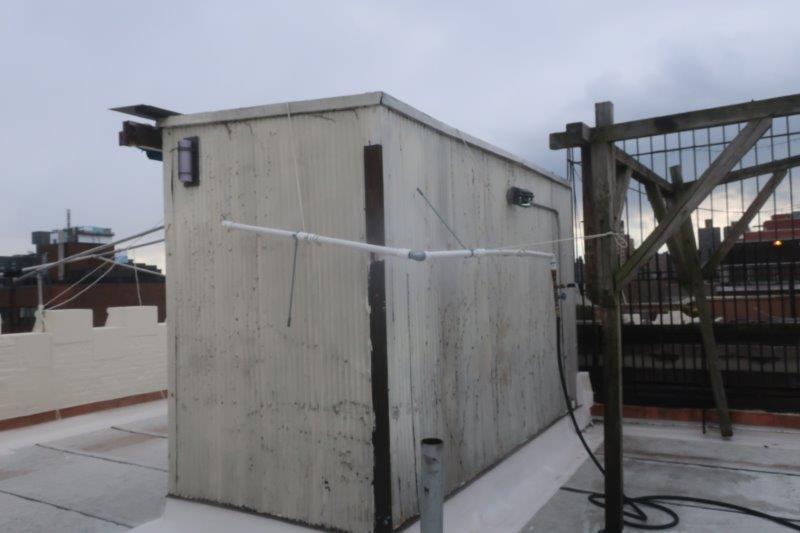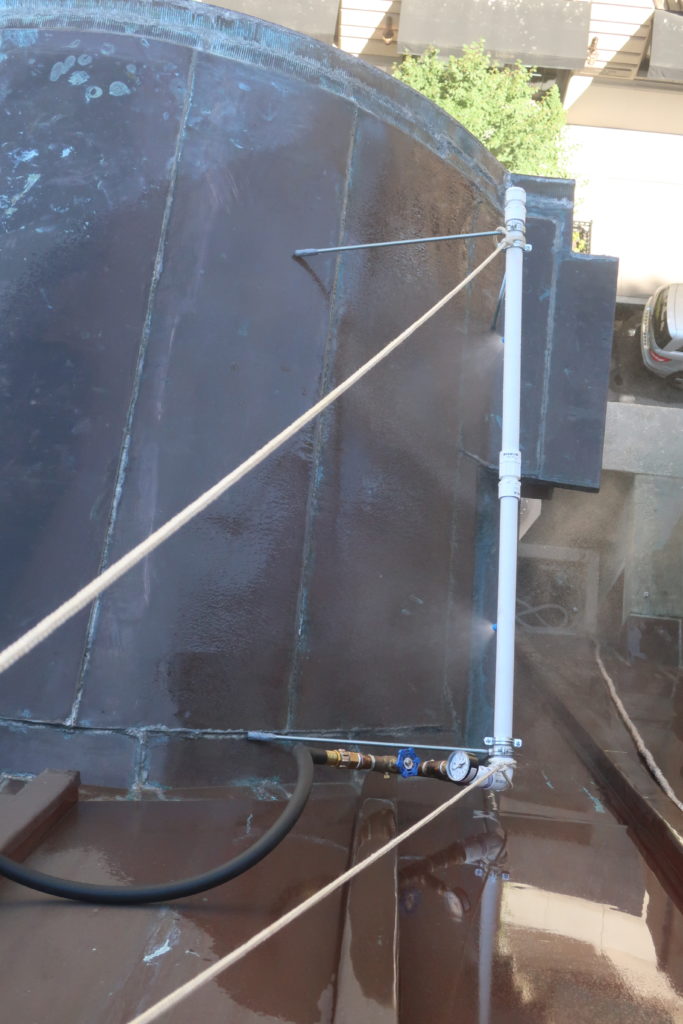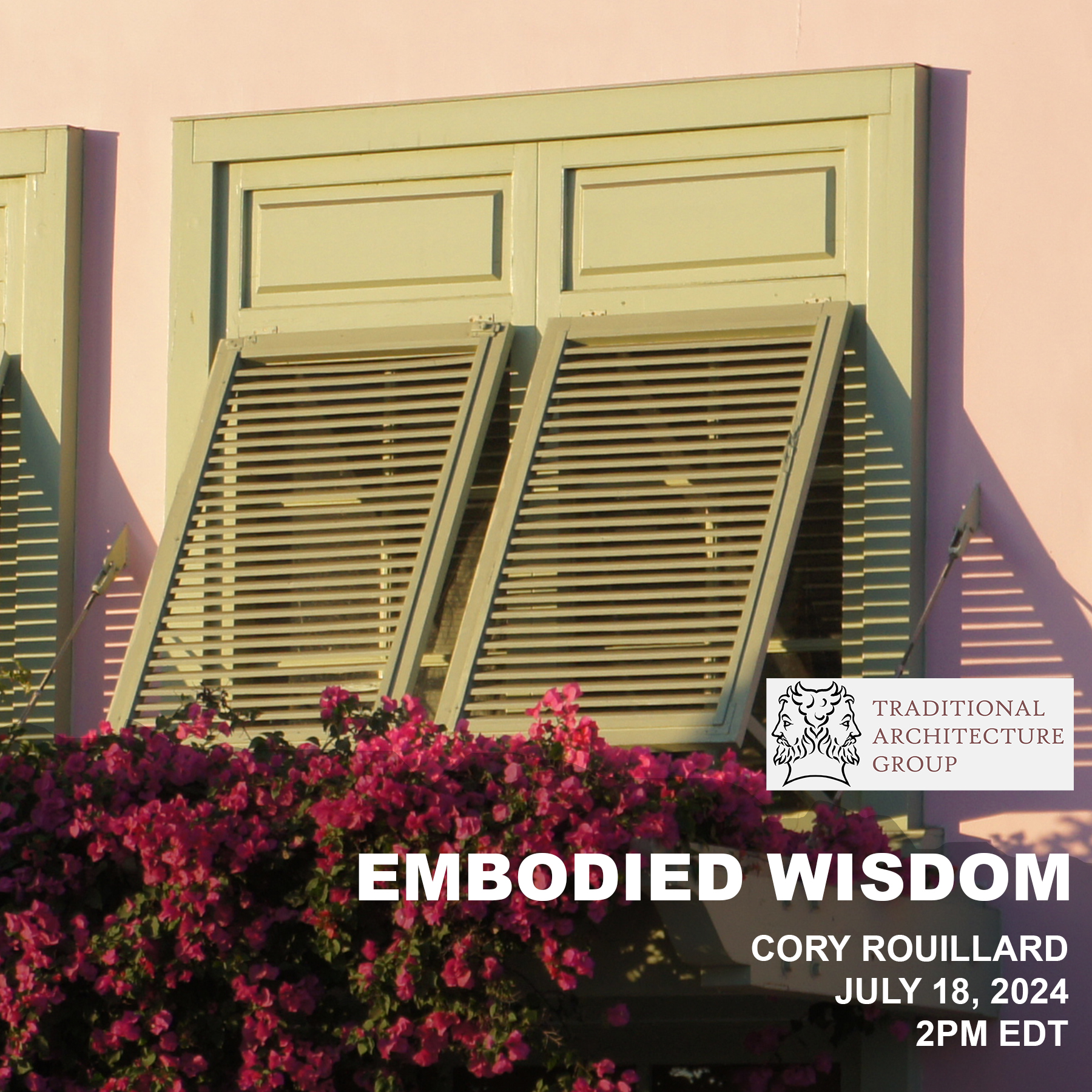Leaks and water damage are a common headache for building occupants, building managers, and property owners and a frequent query for Architects and Engineers, who are often hired to locate where leaks are occurring. Each leak is different, with some being straightforward and others being more difficult to ascertain the location of the water infiltration. It can be much more complicated to chase down a leak in a 9-story apartment building than a single-family home, but this is not always the case. This work is often seen as tedious and time-consuming, however, it is also essential due to its common occurrence and water infiltration’s often devastating effects. Water can not only lead to unsightly spots on a building’s interiors, but also to biological growth and sometimes even structural damage if allowed to persist.
The first step to locating the cause of a leak is to track when, where, and how the water is infiltrating the building. Is water constant or periodically leaking during or after weather events? Does the leak only happen after or during wind-driven rain? Where is the water damage occurring: under a window, at the ceiling, on the floor; and how does it appear: a puddle, discoloration/staining, biological growth, softened structural materials? After investigation, using a variety of methods, our experts will often be able to identify a likely source.
After identifying a likely source(s) of water infiltration based on a visual inspection, we often recommend a water test to confirm where the water is breaching the building envelope. Henson Architecture performs water tests using a variety of equipment to meet the needs of individual testing locations and situations. An AAMA B-25 Nozzle or a spray bar, both with a booster pump, are often used. Equipment is usually held by hand, suspended from ropes, or propped up on metal legs about 12” from the test area. Each apparatus recreates a relatively severe rainstorm. We use these tests, which are similar to industry standards but without a pressurized chamber because they allow for an economical and repeatable approach with known water delivery volumes and pressures.
Once our testing equipment is set up and our team is situated, often one or two people operating the equipment and one person inside the building monitoring for water infiltration, the test will begin. Spray bar testing usually begins slightly below the lowest suspected location of water infiltration, gradually moving upwards in increments of time determined by the type of leak we are looking for and typical testing protocols. If a single nozzle is being used, the same methodology applies, but for smaller, more focused areas.
After the water testing has been completed, a report is prepared to describe the conditions being investigated, water testing methods, details of our observations and findings, and recommendations for repairs. Of course, there are times when the source of a leak cannot be easily located. While this sounds like a frustrating situation, it can often mean that the water test simply could not replicate the same conditions under which the leak occurs. In this case, further testing (such as a flood test or pressurized chamber, if applicable) or investigative openings into the roof or wall (probes) are recommended. Other times, we ask our clients if they can be patient and let us monitor the situation over time. We return to the site after severe storms or when the client observes moisture or other changes. We then relate this to recent weather events searching for a pattern. Other times we discuss with the client and in collaboration with a contractor, specify repairs that we believe may remediate the leaks because a leak certainly won’t fix itself!






